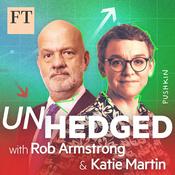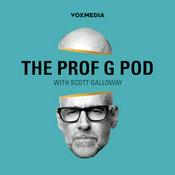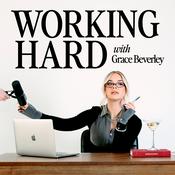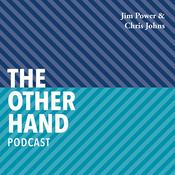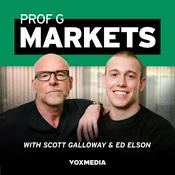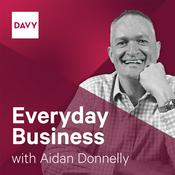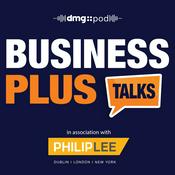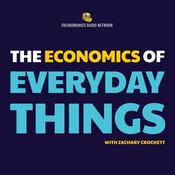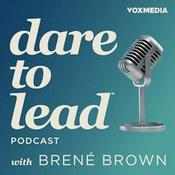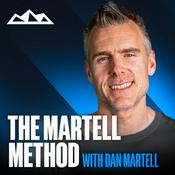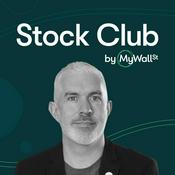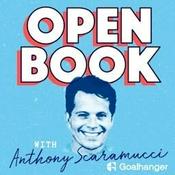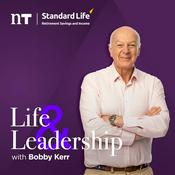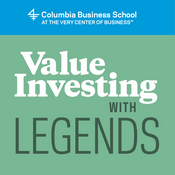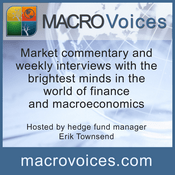527 episodes

What 2025 Taught Us About Investing (And Why “Normal” Matters)
07/1/2026 | 39 mins.
For first-time listeners, welcome! In this opening episode of the year, Paul Merriman—founder of the Merriman Financial Education Foundation—looks back at 2025 to uncover what the markets taught us and how those lessons can help do-it-yourself investors make better decisions going forward.Despite endless predictions about what markets should do, Paul reminds us that his role isn’t to forecast the future—but to help investors understand risk, return, and how to build portfolios they can truly stick with.In this episode, Paul explores:A surprising result from the “Magnificent Seven” stocksWhy diversification mattered more than ever in 2025How different equity asset classes really performedWhat 56 years of data (1970–2026) tells us about staying the courseWhy portfolio structure matters far more than chasing winnersTwo very different—but valid—approaches to fixed income investingIf you want perspective instead of predictions—and data instead of hype—this episode is a powerful way to start the year.

Pediheart Podcast #366: A Focus On Financial Health With Mr. Paul Merriman
31/12/2025 | 43 mins.
The following are Dr. Pass’ note to his podcast: This week we end 2025 with a Pediheart tradition - an episode on personal finance for medical professionals with noted authority on index investing and personal finance, Mr. Paul Merriman. Paul is a retired investment advisor who now has a popular podcast "Sound Investing" and website in which he offers advice on investing for 'do it yourself' investors. In this week's episode, the 5th of his visits to Pediheart, Mr. Merriman discusses 'factor investing' via index-like ETF's and funds. He also reviews who he believes might benefit from a financial advisor, what sort of advisor most should seek out and why he believes that many do not need one if they can 'stay the course'. Resources mentioned in today's podcast are below. Wishing all a happy and healthy new year in 2026. Paul's website:https://www.paulmerriman.com/#gsc.tab=0'Best In Class' ETF's:https://www.paulmerriman.com/Best-in-Class-ETF-Recommendations2025#gsc.tab=0Sound Investing 'Quilt Charts':https://irp.cdn-website.com/6b78c197/files/uploaded/(K)_Quilt_Charts_(1928-2024)_-_2024_Returns_(1).pdfDFA 'Turn Out The Noise':https://www.dimensional.com/filmAs a reminder, all of the information provided in this week's episode should be considered entertainment and all financial decisions should be vetted with professionals or knowledgeable and trusted friends/family.

The Importance of Keeping Investing Simple!
24/12/2025 | 19 mins.
In this episode, Paul shares the thinking behind what he believes may be one of the most important projects of his career—a project guided by a single goal:That every investor who follows our work will know how to invest for the rest of their life.To explain why that goal matters, Paul walks through the forks in the road every investor eventually faces—from betting on individual companies to owning entire markets, from chasing excitement to embracing simplicity.Drawing on real experiences, including private investments that went to zero and one that unexpectedly turned into millions, Paul explains why diversification beats prediction, how a simple portfolio decision may quietly add about 1% a year over time, and why many academics draw a clear line between investing and speculation.This episode isn’t about chasing returns.It’s about building a plan you can live with—through good markets and bad—for the rest of your life.If you’re looking for clarity, discipline, and a framework that helps you stay the course, this conversation is a powerful place to start.Next week, I’ll be reviewing what we learned in 2025—and what those lessons may mean for 2026 and beyond.Thank you, and happy holidays to you and your family.

Paul Merriman on Long-Term Investing, Compounding, and Building Wealth
17/12/2025 | 1h 20 mins.
Compounding Project Podcast – Episode 36In Episode 36 of The Compounding Project Podcast, legendary investing educator Paul Merriman shares timeless insights on long-term investing, the power of compounding, and how everyday investors can build lasting wealth.Paul explains why starting early is one of the most important financial decisions you can make, how compound growth works quietly over decades, and why low-cost index funds remain the foundation of successful investing strategies.This episode dives deep into portfolio diversification, the hidden impact of investment fees, and the role of small-cap value investing in improving long-term returns. Paul also offers practical, evidence-based guidance for young investors, parents, late starters, and anyone seeking financial independence through disciplined investing.Whether you’re new to investing or refining an existing portfolio, this conversation delivers actionable lessons on building wealth the smart way.Starting early and staying consistent matters more than market timing or stock picking.Low-cost index funds and diversification are the most reliable tools for long-term wealth building.Small-cap value investing and minimizing fees can significantly increase lifetime investment returns.Your Money and Your BrainThe Psychology of MoneyThinking, Fast & SlowSpending Your Way to WealthWatch the full episode for expert insights on investing, compounding, and financial freedom.Follow Paul Merriman On Social Media: ⤵︎📷 Instagram: / / paulamerriman2012 📱 YouTube: / / @paulmerrimansoundinvesting To Know More,Follow Sathish Gajula On Social Media: ⤵︎ 📷 Instagram: / / compoundingproject 📱 YouTube: / / @compoundingproject Timestamps:00:00 Episode Trailer02:00 Intro to Wealth and Index Funds03:20 The Million Dollar Decision07:04 Investing Tips for Young Parents12:47 Saving When Money Feels Tight15:35 Stocks vs Bonds19:58 Rethinking Stock Market Risk24:36 Why Investing Is Easier Today27:06 How Fees Hurt Returns29:08 When Bonds Make Sense32:56 Investing Across Generations34:58 Portfolios by Age35:52 Starting Late in Investing41:05 Defensive Investing Basics42:10 Why Stocks Matter Most43:04 Beating the S&P 50048:09 Market Returns Explained51:22 Why Diversification Matters54:49 Fees and Long-Term Returns58:28 Small Cap Value vs Total Market01:03:25 Equal-Weight S&P 50001:08:36 Handling Market Volatility01:11:05 Picking Small Cap Value Funds01:12:50 Trust in Investing01:16:42 Hotseat Questions

AAII Q&A Series (Part 3 of 3)
10/12/2025 | 1h 17 mins.
Over the last couple of weeks, I’ve been recording a series of Q&As that came out of a presentation I gave in November for the American Association of Individual Investors — AAII.At the end of that nearly two-hour talk, I promised that I’d do a podcast answering every single question that came in. Well… there were 36 questions. That’s a little too much for one episode, so we broke them into three parts.This is Part 3 — the final 12 questions. If you haven’t heard Parts 1 and 2 yet, we’ll link those in the show notes so you can catch up.Before we jump in, I just want to say: I’m a huge fan of AAII. I started teaching their local chapters way back in 1984, and over the years I think I’ve presented to just about every chapter in the country — sometimes in person, sometimes by Zoom — but always to people who are genuinely committed to learning how investing works.If you’ve never checked out AAII, I’ll include a link in the notes for a low-cost trial membership. Take a look around and see if it’s a resource that fits your investing journey.Alright — let’s get to the last 12.Will you develop strategies using the equal-weighted S&P 500? 01:44Can you recommend advisors who follow your strategy? 07:20Should I move mutual funds to ETFs in taxable accounts despite taxes? 11:26With markets at highs, should I keep dollar-cost averaging or rebalance? 16:17What portfolio fits 10 years to retire and 20–30 years of decumulation? 24:08Will the configurator shift to only Avantis/DFA funds in 2026? 30:37What does “inflation-adjusted fixed withdrawals” mean? 33:56How should I invest an inheritance for kids/grandkids ages 2–45? 38:21Ultimate Buy-and-Hold vs. two- or four-fund strategies — which is better? 49:03Should political conditions change retirement portfolio decisions? 59:12How do I find a fee-based/hourly advisor (Rhode Island question)? 1:05:56Should very conservative 91-year-olds move beyond bonds and cash? 1:13:28Part 1 of the AAII Q&A Series Part 2 of the AAII Q&A Series AAII trial membership offer (the ~$2 first month deal) Boot Camp series hub Fine-Tuning Your Asset Allocation table / lessonSound Investing / portfolio decade return tables — Fixed vs. Variable Withdrawal episode/article H-2A table referenced in Q9 Chris Pedersen Boot Camp presentation (Two-Fund for Life) Garrett Planning Network advisor directory HelloNectarine hourly advisor platform PlanVision / Mark Zoril reference
More Business podcasts
Trending Business podcasts
About Sound Investing
Listen to Sound Investing, Unhedged and many other podcasts from around the world with the radio.net app

Get the free radio.net app
- Stations and podcasts to bookmark
- Stream via Wi-Fi or Bluetooth
- Supports Carplay & Android Auto
- Many other app features
Get the free radio.net app
- Stations and podcasts to bookmark
- Stream via Wi-Fi or Bluetooth
- Supports Carplay & Android Auto
- Many other app features


Sound Investing
download the app,
start listening.
